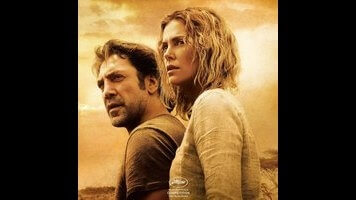Sean Penn’s festival laughingstock The Last Face finally slips into theaters

Many actors try their hand at directing, but few can match the degree of success—on both sides of the camera—that Sean Penn has achieved. Films like The Pledge (2001) and Into The Wild (2007) demonstrate the same intelligence, sensitivity, and power that Penn invests in his Oscar-winning performances. He occasionally has weird, disastrous lapses in taste, though. His contribution to the omnibus feature September 11 (2002), in which the collapse of the Twin Towers allows sunlight into the apartment of a lonely widower played by Ernest Borgnine, injects a degree of truly appalling mawkishness into one of the most horrific days in American history. But that’s nothing compared to the sustained tone-deaf fiasco that is Penn’s latest feature, The Last Face—a movie so monumentally miscalculated, right from its opening explanatory text, that the audience at Cannes, where it (inexplicably) premiered in Competition last year, started laughing at it within the first 30 seconds. All one can really do is gape in wonder and puzzlement.
Set during the previous decade, mostly in Liberia and Sierra Leone, The Last Face stars Charlize Theron as Wren Petersen, head of an organization that’s Doctors Without Borders in everything but name. Wren has a yen for triage surgeon extraordinaire Miguel Leon (Javier Bardem), who she meets in the field; a romance quickly brews, and their paths keep crossing professionally, though Miguel has a roving eye, at one point getting involved with Wren’s cousin, Ellen (Adèle Exarchopoulos from Blue Is The Warmest Color). As committed as these two humanitarians are to helping those in need, they have a hell of a time making a firm commitment to each other. Screenwriter Erin Dignam scrambles the chronology, opening with Wren and Miguel at their most strained and repeatedly flashing back to happier times, albeit still in the midst of misery. Indeed, it’s strongly implied that this relationship is rooted in their mutual need for a life filled with chaotic intensity—that we’re seeing the career-driven equivalent of fucking after a funeral.
Penn’s intentions with The Last Face are honorable, and very much in line with his frequent real-life political activism. He wants to call attention to the plight of innocent victims in war-torn African nations (Wren delivers a climactic speech to this effect, scolding the West for its apathy), and he also wants to honor the foreigners who put their lives at risk to help those victims. Somehow, though, it never occurred to him that foregrounding an on/off love story between two gorgeous movie stars—while a sound strategy to sell more tickets—inevitably trivializes the carnage that surrounds them. This is a film in which anonymous black bodies, riddled with bullets and shrapnel, function merely as obstacles in the path of white people’s personal fulfillment. It’s embarrassing to watch, and Dignam’s clunky, stilted dialogue—which the actors (including Jean Reno and Jared Harris in supporting roles) struggle in vain to rescue via dramatic pauses—only makes matters worse. Penn, meanwhile, flails the camera around with an uncharacteristic lack of elegance, when he isn’t borrowing some of Terrence Malick’s most self-indulgent impulses. But this run-of-the-mill mediocrity becomes far more unpalatable when combined with myopia.
The Last Face’s hilariously pompous opening text, which appears on-screen a few words at a time, claims that we can only know of these tragic conflicts “through the brutality of an impossible love… shared by a man… [wait for it, wait for it—the movie makes you wait endlessly, for some reason]… and a woman.” The Sean Penn who thought it a good idea to have the death of literally hundreds illuminate one old man’s sad existence probably believes that. Let’s all look forward to the next movie from that other Sean Penn.